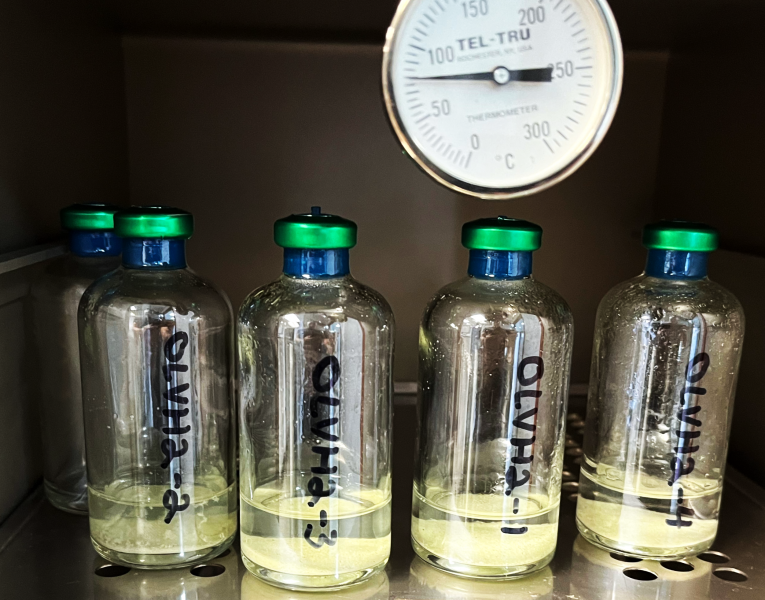Researchers at The University of Texas at Austin are investigating a range of natural catalysts to produce hydrogen gas from rocks rich in iron, potentially revolutionizing the energy transition by eliminating carbon dioxide emissions.
 Researchers are studying chemical catalysts that can produce hydrogen gas from iron-rich rocks. Image Credit: Toti Larson/The University of Texas at Austin.
Researchers are studying chemical catalysts that can produce hydrogen gas from iron-rich rocks. Image Credit: Toti Larson/The University of Texas at Austin.
The project’s success could pave the way for a groundbreaking geologic hydrogen industry.
We are producing hydrogen from rocks. It’s a type of non-fossil fuel production of hydrogen from iron-rich rocks that has never been attempted at an industrial scale.
Toti Larson, Study Lead Researcher and Research Associate Professor, Jackson School of Geosciences Bureau of Economic Geology, The University of Texas at Austin
Recently, the researchers secured a $1.7 million grant from the Department of Energy and are partnering with contemporaries at the University of Wyoming’s School of Energy Resources to assess the viability of this method on various rock types throughout the United States.
Hydrogen is a key component of the energy transition as it does not emit CO2 when burned as fuel, with only water as the byproduct. However, most hydrogen is currently created from natural gas, a method that releases CO2.
Larson highlighted that creating geologic hydrogen from rocks rich in iron could significantly alter the energy transition landscape due to its minimal carbon emissions.
Larson added, “If we could replace hydrogen that is sourced from fossil fuels with hydrogen sourced from iron-rich rocks, it will be a huge win.”
The team’s research focuses on catalysts that can enhance a natural geologic process known as “serpentinization,” during which rocks rich in iron emit hydrogen through chemical reactions.
Typically, serpentinization occurs at high temperatures. However, the team aims to trigger hydrogen production at lower temperatures and accessible depths using natural catalysts such as nickel and other platinum group elements. This approach could greatly enhance global hydrogen production from rocks rich in iron.
Natural accumulations of geologic hydrogen are being found all over the world, but in most cases they are small and not economical, although exploration continues. If we could help generate larger volumes of hydrogen from these rocks by driving reactions that would take several million years to happen in nature, I think geologic hydrogen could really be a game changer.
Esti Ukar, Research Associate Professor and Project Collaborator, Jackson School of Geosciences Bureau of Economic Geology, The University of Texas at Austin
Ukar is also spearheading efforts on another energy conversion project, focusing on developing carbon-free mining methods to incorporate CO2 storage into the mineral extraction process.
The Department of Energy Advanced Research Projects Agency-Energy (ARPA-E) grant will fund the scaling up of experiments and testing of the process on various iron-rich rock types found throughout North America. The team plans to explore the use of catalysts on basalts from the Midcontinent Rift in Iowa, ultramafic rocks in the Midwest, and banded iron formations in Wyoming.
This study is part of numerous research efforts at the Bureau of Economic Geology, exploring the role of the subsurface in generating and storing hydrogen as part of the energy transition.